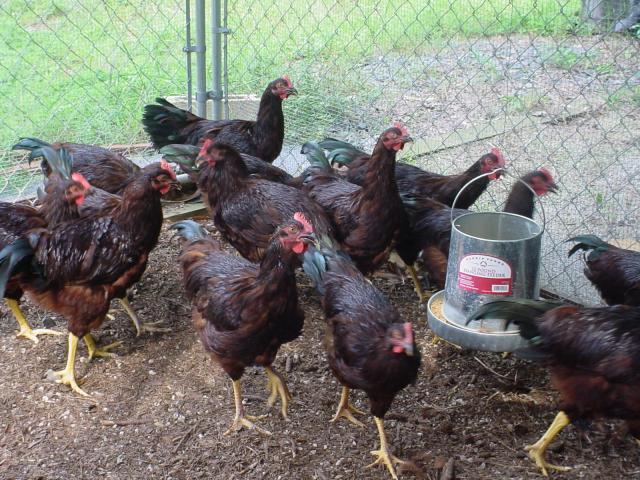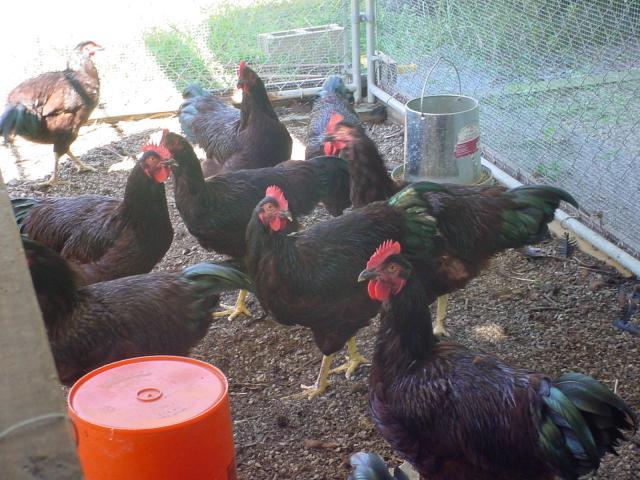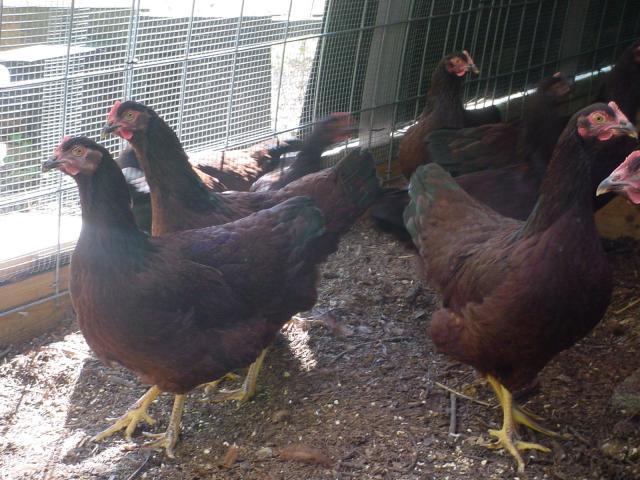I apologize for responding to an older message and if this has already been covered, but I've been away for quiet a while and I'm only up to message #519 in this thread so far...
The idea of the "off season" hatched birds being inferior is something that has bugged me for a while and something that I've just recently re-visited. My initial curiosity was tweaked by something I read in Gail Damerow's chicken handbook regarding fall-hatched pullets possibly being more prone to prolapse.
It appears that the problem is not really an issue that the chicks are hatched in the fall but rather that they near maturity or come to maturity during a time of increasing daylight hours. Follicle stimulating hormones (FSH) cause the formation of ovarian follicles and eventually ovum/yolk. The increasing daylight hours tend to increase the FSH formation and thus accelerates the sexual maturity of the pullet...possibly bringing the pullet to sexual maturity *before* the pullet is physically/structurally mature thus causing problems with egg-laying.
Conversely, with "in season" (spring/summer) hatched birds they will near maturity or come to maturity during a time of decreasing daylight hours. The time of decreasing daylight hours causes the formation of FSH to decrease and thus slows down the pullet's sexual maturing so that their skeletons, etc., are physically matured when they finally come into season.
Here is a good article at the University of Main (the entire article is good, but about halfway down is a section titled "The role of light in reproduction"...
Lighting For Small-Scale Flocks
Here is a graph calculator for determining daylight hours...
Daylight in a Graph
Using the graph and noting your hatch date you can count forward to your pullets' estimated POL and visually see whether they will be coming into maturity in decreasing or increasing daylight hours. If they will be maturing during increasing daylight hours you might want to read a couple of the sections on down in the UofM article.
I don't know whether these hormones or others that are light sensitive could be causing the smaller birds but there might be a connection...???
Just some food for thought but remember, this comes from a guy that still doesn't have a chicken on the place.
...one day, though....
Ed
Quote:
The Fall hatched birds tend to be smaller. They carry the correct size genes, but they are physically smaller in most cases. Fall is a good time to hatch bantams but not large fowl.......or that has been my experience in this very temperate climate here in Calif.
Walt
I did experience that with hatching Delawares. I had a hatch the first of November and a hatch in March. The March birds are noticably larger. I thought it was because I changed feeds, and started using Game Bird feed with the March hatch.
Shoot, guess I will unplug the incubators now.
 I thought my husband was going to kill me....he just turned around and walked away cause he was so mad.
I thought my husband was going to kill me....he just turned around and walked away cause he was so mad.

 Thank you for sharing. It sure sinks in better when people give life stories and examples. I don't always have to learn the hard way and this I will remember!
Thank you for sharing. It sure sinks in better when people give life stories and examples. I don't always have to learn the hard way and this I will remember!














